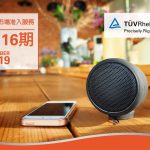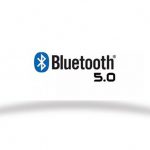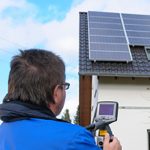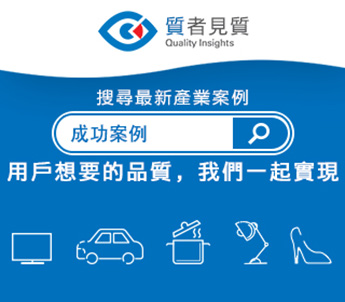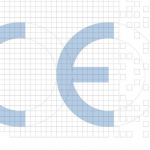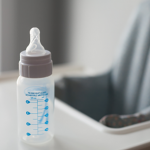疫情後 智能家居趨勢領跑? Post pandemic home: smart home contribute to safe and health

為減少COVID-19的傳播,數以百萬計的人在家工作,並常在家中桌椅、門把、電燈開關、遙控器、手柄、書桌、馬桶、水槽等經常觸及的表面進行清潔和消毒。帶有語音控制的智能家居設備,包括智能手機、電視遙控器、電燈開關、恆溫器、門把手等不但可以減少接觸經常觸及的表面,還可以利用語音來進行在線購物和信息收集,語音控制功能在智能家居領域有了顯著的進展。
據全球科技市場諮詢公司ABI Research的數據顯示,去年全球語音控制智能家居設備的出貨量為1.41億台,儘管中國作為主要市場在2020年第一季度受到衝擊,語音控制設備在疫情大流行期間表現出的價值,使今年的出貨量將比2019年增長近30%。
根據國際數據公司(IDC)的另一項研究顯示,2019年第4季度,智能音箱在歐洲智能家居市場中佔25.8%的份額。預計該類別在2020年至2024年期間將以15.6%的年復合增長率增長。 2020年照明、家居保安監控和溫控器加起來預計佔21.5%,2024年預計成長至智能家居市場的31.3%。
從IFA 2019年的智能家居演進趨勢來看。在語音控制家電上,AXI、博世在洗衣機上加入了語音和聊天助手,而西門子和亞馬遜則在廚房電器和微波爐上集成了語音控制。從長遠來看,語音控制和其他智能功能,例如: 成像、深度學習等將繼續推動智能家居的採用。習慣和經驗的改變,從物理操控轉向家居中的智能控制,將使智能家居有更大的擴展。
連接性也是智能家居設備的重要組成。藍牙網狀網絡實現了多對多(m:m)設備通信,非常適合創建控制、監控和自動化系統,在這些系統中,數十、數百或數千台設備需要可靠、安全地相互通訊。根據《2020年藍牙市場報告》,2024年藍牙智能家居設備出貨量將達到18.2億件,比2019年的9.1億件翻了一翻。藍牙語音控制前端設備成為主流,並增長77%,到2024年出貨量將達到2.5億件。未來5年,家庭自動化和控制將迎來大幅增長,而像OEM遙控器、音箱、電視等連接家庭設備,以及其他家庭音頻和娛樂設備,將繼續推動智能家居設備的大部分出貨量。

德國萊茵TÜV在通信技術領域創造了許多第一。除了在大中華區建立了第一個藍牙測試實驗室外,我們也是能夠測試藍牙芯片的認證機構。 德國萊茵TÜV也是能夠提供Sigfox和Zigbee全系列測試認證服務的測試認證機構。得益於我們全面的全球戰略,德國萊茵TÜV可以提供短距離通信技術(如藍牙、Wi-Fi、Zigbee和RFID)和蜂巢式通訊技術(2G/3G/4G/5G)的本地化測試服務。我們在全球設立了11個物聯網實驗室,為企業在各國獲得無線認證提供了更快、更方便的選擇。
智能家居的連接範圍將繼續發展和擴大,從家用電器、娛樂系統和能源控制到自動駕駛汽車等領域,無線產品的連接範圍不斷擴大。德國萊茵TÜV與智能家居製造商密切合作,確保實現對消費者的安全性與便利性。在設計智能家居產品時,製造商應考慮到產品的簡單性、互操作性、未來可擴展性和產品安全性。我們經驗豐富的專家將指導您應對智能家居產品設計、測試和認證的複雜挑戰。
Post pandemic home: smart home contribute to safe and health
With the COVID-19 pandemic spreading quickly across the globe, millions of people are working from home to minimize transmission. Recommended for COVID-19 protection in the home is to clean and disinfect high-touch surfaces daily in household common-use locations (e.g., tables, hard-backed chairs, doorknobs, light switches, remotes, handles, desks, toilets, sinks). Voice control technology has already made significant inroads into the smart home space, and voice control can mean avoiding commonly touched surfaces around the home, from smartphones to TV remotes, light switches, thermostats, door handles, and more. Voice control can also be leveraged for online shopping and information gathering.
According to the global tech market advisory firm ABI Research, last year 141 million voice control smart home devices were shipped worldwide, and despite the key China market being impacted during the first quarter of 2020, the value of voice control demonstrated during the pandemic will ensure that this year voice control device shipments will grow globally by close to 30% over 2019.
According to other research conducted by International Data Corporation (IDC), smart speakers represented 25.8% of the smart home market in 4Q19 in Europe. This category is expected to grow at a CAGR of 15.6% between 2020 and 2024. Lighting, home security monitoring, and thermostats combined are expected represent 21.5% in 2020, and expected to represent 31.3% of the total smart home market in 2024.

Trends in smart home evolution as observed at IFA 2019. On voice control home appliances, AXI and Bosch have incorporated voice and chat assistants to help with washing machines, while Siemens and Amazon have integrated voice control on kitchen appliances and microwaves. In the long term, voice control and other smart features, such as imaging and deep learning, will continue to drive smart home adoption. Changes in habits and experience, moving away from physical actuation toward using smart control in the home, will engender greater smart home expansion.
Connectivity is also an important element for smart home devices. Bluetooth mesh networking enables many-to-many (m:m) device communications and is ideally suited for creating control, monitoring, and automation systems where tens, hundreds, or thousands of devices need to reliably and securely communicate with one another. According to the 2020 Bluetooth Market Update, Bluetooth smart home device shipments will reach 1.82 billion in 2024, double the 0.91 billion in 2019. Voice control front-end devices will become mainstream, increasing 77% to reach 250 million shipments in 2024. While home automation and control will see significant growth over the next five years, connected home devices such as OEM remote controls, speakers, TVs, and other home audio and entertainment devices will continue to drive the majority of smart home device shipments.
TÜV Rheinland has set many firsts in communications technology. In addition to setting up the first Bluetooth testing lab in the Greater China region, we are also a certification body with Bluetooth chip testing capability. TÜV Rheinland is also a test certification body that can provide the full range of testing services for Sigfox and Zigbee. Thanks to our comprehensive global strategy, TÜV Rheinland can provide localized testing services for short-range communication technologies (e.g. Bluetooth, Wi-Fi, Zigbee, and RFID) and for long-range communication technologies (2G/3G/4G/5G). Our 11 IoT laboratories around the world provide businesses with faster and more convenient options for obtaining wireless certification in each country.
The extent of connectivity in the smart home will continue to evolve and expand, encompassing more aspects of the home. The scope of wireless product connectivity ranges from household appliances, entertainment systems, and energy control networks to autonomous cars and beyond. Advances in smart home technology provide consumers with a wide range of benefits including security, energy efficiency, and convenience. TÜV Rheinland works closely with manufacturers of connected home solutions to make certain that the convenience inherently promised to consumers is realized. When designing smart home products, manufacturers should consider simplicity, interoperability, future extensibility, and product security. Proper testing and certification can save money and expedite time-to-market. Our experienced experts guide you through the complex challenges of smart home product design, testing, and certification.
熱門分享












